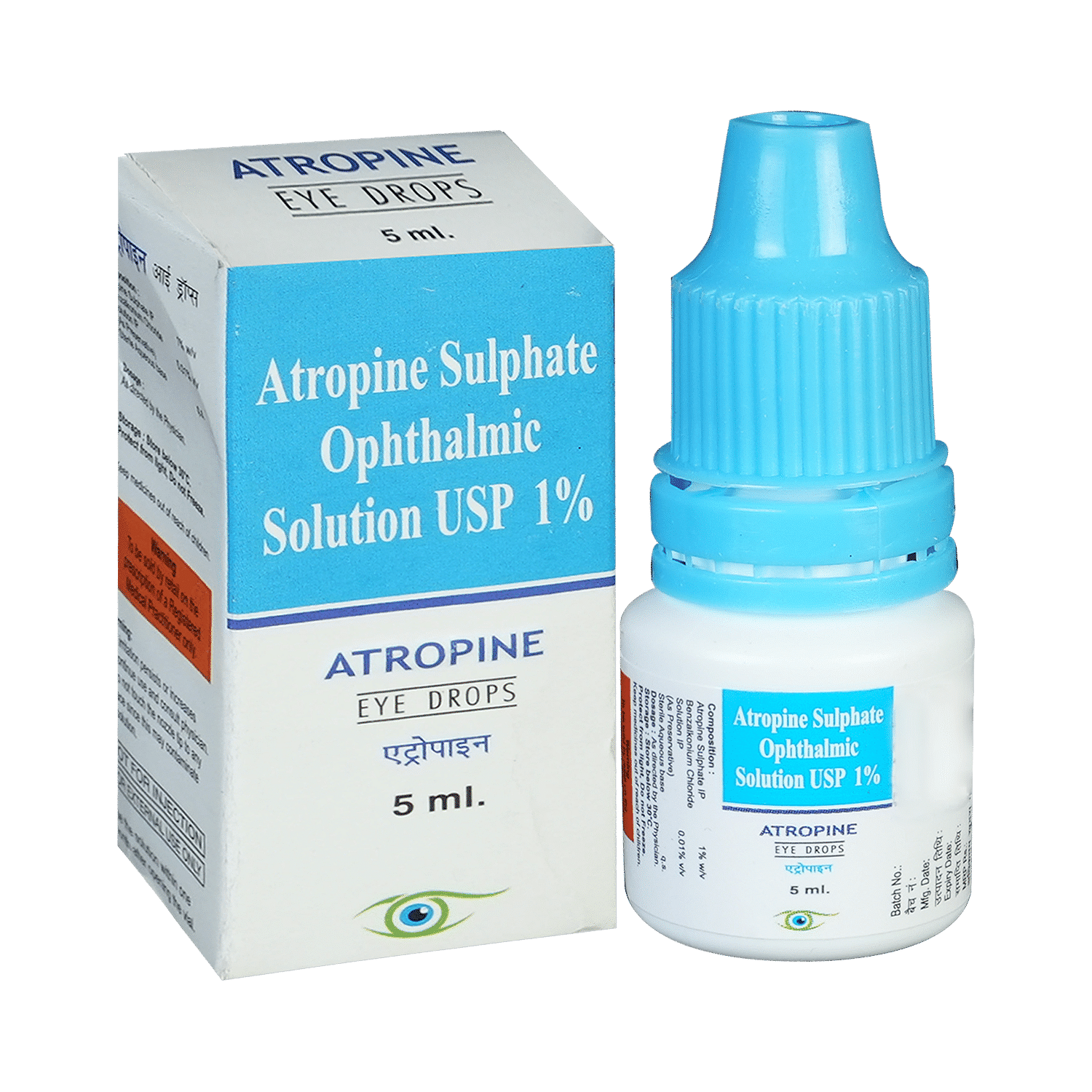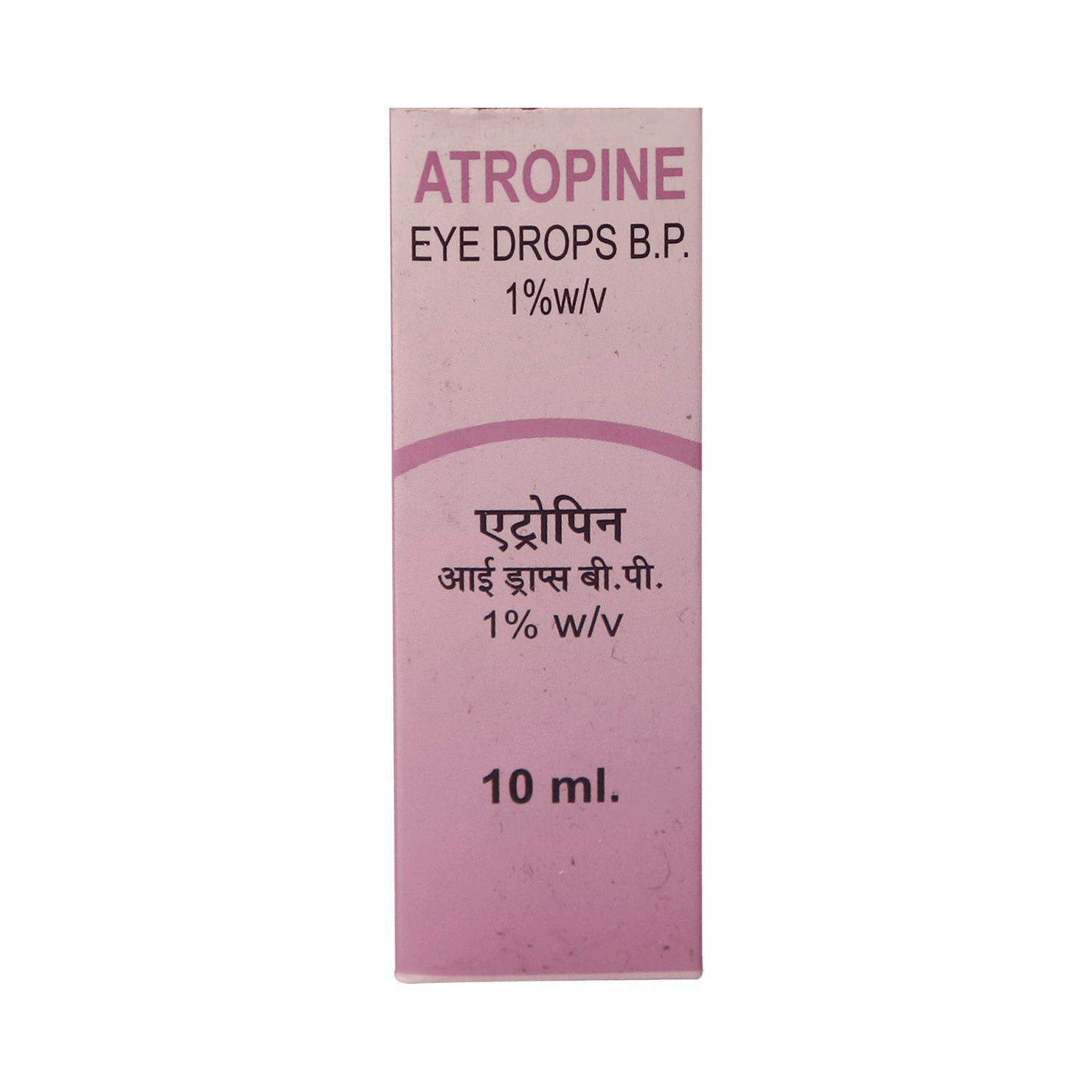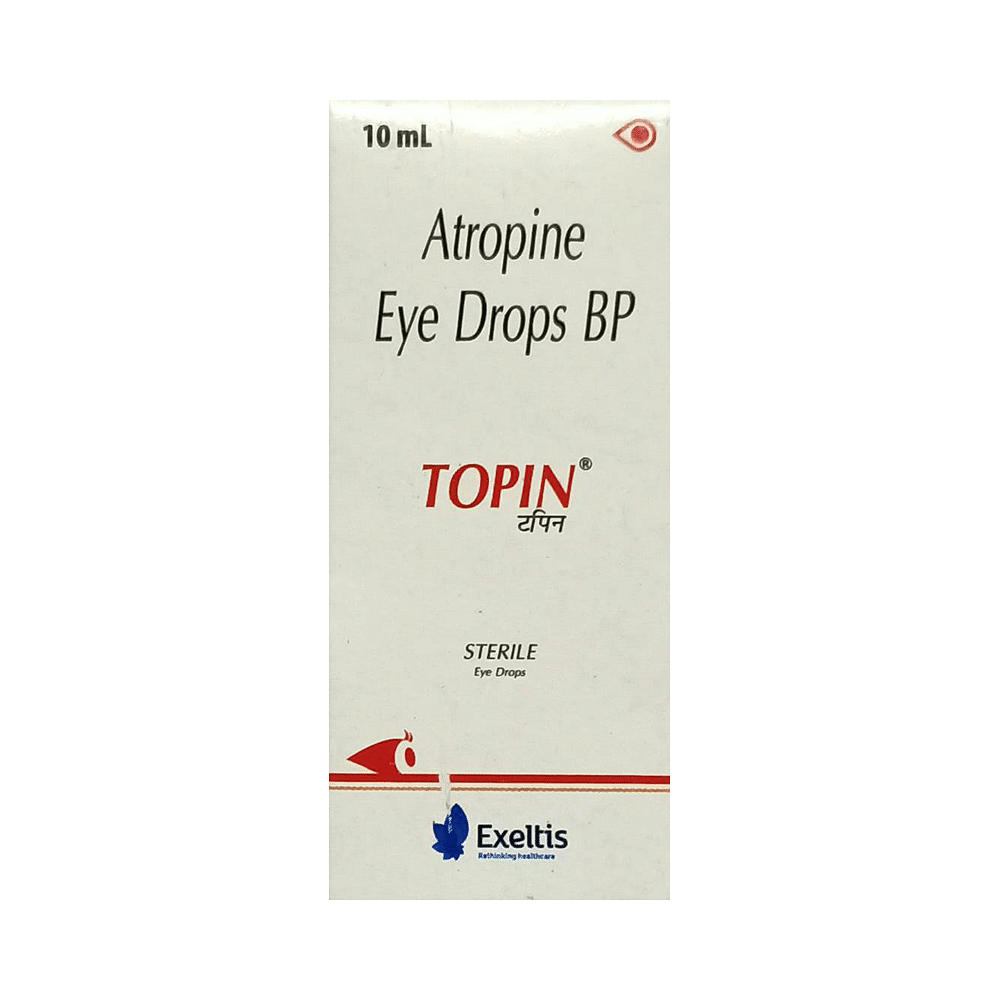
Atrop Eye Drop
Manufacturer
Aurolab
Salt Composition
Atropine (1% w/v)
Key Information
Short Description
Atrop Eye Drop is used to treat myopia and inflammation in the eyes (uveitis or iritis). It is also used to induce cycloplegia for eye examination and diagnose eye problems like blurred vision or squint in children.
Dosage Form
Eye Drop
Introduction
Atrop Eye Drop is an anticholinergic medication used to treat myopia and inflammation in the eyes. It works by making the pupil of your eye larger and relaxes the muscles in your eye, allowing proper examination. It also helps reduce inflammation or swelling in the eye (uveitis or iritis).
Directions for Use
This medicine is for external use only. Use it in the dose and duration as advised by your doctor. Check the label for directions before use. Hold the dropper close to the eye without touching it. Gently squeeze the dropper and place the medicine inside the lower eyelid. Wipe off the extra liquid.
Safety Information
Side Effects
No common side effects listed.
Alcohol Warning
No interaction found/established
Breastfeeding Warning
Atrop Eye Drop is probably unsafe to use during breastfeeding. Limited human data suggests that the drug may pass into the breastmilk and harm the baby. Milk secretion may decrease.
Pregnancy Warning
Atrop Eye Drop may be unsafe to use during pregnancy. Although there are limited studies in humans, animal studies have shown harmful effects on the developing baby. Your doctor will weigh the benefits and any potential risks before prescribing it to you. Please consult your doctor.
Interacting Medicines
Donepezil Rivastigmine Galantamine Amisulpride
How it works
Atrop Eye Drop is an anticholinergic medication. It works by making the pupil of your eye larger and relaxes the muscles in your eye, allowing proper examination. It also helps reduce inflammation or swelling in the eye (uveitis or iritis). Using Atrop Eye Drop dilates the pupils and temporarily paralyzes the focusing muscle inside the eye. It also relaxes the eyes' focusing mechanisms. This treats myopia.
Quick Tips
Use it as suggested by the doctor. It may cause blurred vision. Do not drive or do anything that requires mental focus until you know how this medicine affects you. Generally it is not advised to wear contact lenses but if you have to wear then wait for 15 minutes to reuse. You may be asked for regular eye checkups before and during the treatment. Stop using medication or inform your doctor if you notice eye irritation, redness, swelling of the eyelids, and sensitivity to bright light. Inform your doctor if you are pregnant, planning pregnancy, or breastfeeding.
Related Medicines

Atropine Eye Drops

Atropine 1% Eye Drop

Kaitro Eye Drop

Atrosun Eye Drop

Bellpino Atrin 1% Eye Drop

Topin Eye Drop

Atrone 1% Eye Drop

Bell Pino Atrin Eye Drop

Bell Pino Atrin Eye Drop

Atropin 1% Eye Drop
Frequently asked questions
What conditions make Atrop Eye Drop unsuitable for use?
Atrop Eye Drop should not be used in cases of or suspected glaucoma (high pressure in the eye), as it can increase the intraocular pressure. Additionally, it is not suitable for individuals with active eye infections.
Can Atrop Eye Drop cause blurred vision?
The first time you use this medication, your eyes may become watery, and there is a possibility of temporary blurred vision. This typically clears up on its own. Ensure that your vision is clear before driving or operating machinery.
When should I consult my doctor about Atrop Eye Drop?
You should contact your doctor immediately if you develop an eye infection, conjunctivitis, or an eyelid reaction. If you have an eye injury or eye surgery history, inform your doctor as well. Consult with your doctor regarding the continued use of Atrop Eye Drop.
Can I use Atrop Eye Drop while wearing contact lenses?
Do not wear contact lenses while using Atrop Eye Drop. It's recommended to wait at least 15 minutes after using the medication before inserting your contacts. If you experience any persistent eye irritation, seek advice from your doctor.
Can I use other eye drops with Atrop Eye Drop?
It is essential to consult your doctor before combining any other eye drops with Atrop Eye Drop. It's advisable to maintain a gap of at least 10-15 minutes between administrations.
What is the usual dosage for Atrop Eye Drop?
The usual dosage is one to two drops daily. However, it is recommended to consult your doctor if you have any doubts about your dosage.
What should I do if I experience irritation while using Atrop Eye Drop?
If you develop any symptoms such as eye irritation, pain, swelling, excessive tear production, or light sensitivity after applying this medication, rinse the affected eye(s) with cool water (room temperature) for at least 15 minutes. Stop using the eye drops and seek immediate medical advice from your doctor.


